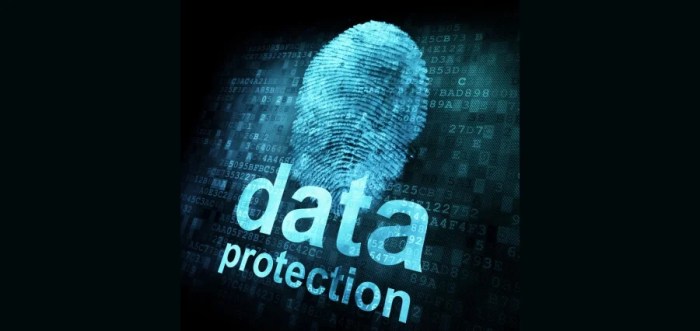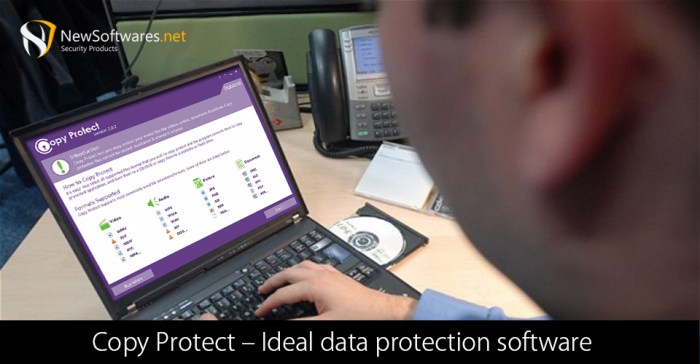Software to protect data – In today’s digital landscape, data is the lifeblood of businesses and individuals alike. From sensitive financial information to personal details and intellectual property, the value of data is undeniable. Consequently, protecting this data from unauthorized access, use, disclosure, disruption, modification, or destruction is paramount. This comprehensive guide explores the multifaceted world of data protection software, offering insights into various types, functionalities, and best practices for ensuring robust data security.
Understanding the Need for Data Protection Software: Software To Protect Data
The threats to data security are constantly evolving, ranging from sophisticated cyberattacks to accidental data breaches. Malicious actors employ increasingly sophisticated techniques, including phishing scams, malware, ransomware, and SQL injection attacks, to gain access to valuable data. Data protection software serves as a crucial first line of defense, mitigating these risks and safeguarding your digital assets.
Types of Threats and Vulnerabilities
- Malware: Viruses, worms, Trojans, and spyware can compromise systems, steal data, and disrupt operations.
- Phishing Attacks: Deceptive emails or websites designed to trick users into revealing sensitive information.
- Ransomware: Malicious software that encrypts data and demands a ransom for its release.
- SQL Injection: Exploiting vulnerabilities in database applications to gain unauthorized access to data.
- Insider Threats: Malicious or negligent actions by employees or insiders with access to sensitive data.
- Data Breaches: Unauthorized access to sensitive data, often resulting from vulnerabilities in systems or applications.
Key Types of Data Protection Software
The market offers a wide array of data protection software solutions, each catering to specific needs and security requirements. Choosing the right software depends on factors such as the type of data being protected, the size of the organization, and the budget.
1. Antivirus and Antimalware Software
These programs are fundamental for protecting against malware threats. They scan files and systems for malicious code, quarantining or removing detected threats. Examples include Norton, McAfee, and Bitdefender. Regular updates are crucial to ensure effectiveness against the latest threats.
2. Firewalls
Firewalls act as a barrier between your network and the internet, monitoring and controlling network traffic. They block unauthorized access attempts and prevent malicious connections. Both hardware and software firewalls are available, often working in conjunction for enhanced protection.
3. Data Loss Prevention (DLP) Software
DLP software monitors and prevents sensitive data from leaving the organization’s control. This includes preventing unauthorized copying, printing, or emailing of confidential information. DLP solutions often incorporate features like data encryption and access control.
4. Encryption Software
Encryption transforms data into an unreadable format, protecting it from unauthorized access even if compromised. Encryption software can be used to protect individual files, entire drives, or even cloud-based data. Strong encryption algorithms are essential for robust protection.
5. Intrusion Detection and Prevention Systems (IDPS)
IDPS monitor network traffic for suspicious activity, alerting administrators to potential security breaches. Prevention systems can automatically block malicious traffic, preventing attacks before they cause damage. These systems are particularly valuable for larger organizations with complex networks.
6. Backup and Recovery Software
Regular data backups are crucial for business continuity and disaster recovery. Backup software automates the process of creating backups, allowing for quick restoration in case of data loss due to hardware failure, malware, or natural disasters. Cloud-based backup solutions are increasingly popular due to their scalability and accessibility.

Source: insightssuccess.com
7. Virtual Private Networks (VPNs), Software to protect data
VPNs create a secure, encrypted connection between a user’s device and a network, protecting data transmitted over public Wi-Fi or insecure networks. VPNs are essential for protecting sensitive data when using public internet access points.

Source: newsoftwares.net
8. Endpoint Detection and Response (EDR) Solutions
EDR solutions provide advanced threat detection and response capabilities at the endpoint level (computers, laptops, mobile devices). They monitor system activity for malicious behavior, providing detailed insights into attacks and enabling rapid response to security incidents. EDR is crucial for identifying and mitigating advanced persistent threats (APTs).
Choosing the Right Data Protection Software
Selecting the appropriate data protection software involves careful consideration of several factors:
- Type of data: The sensitivity and value of the data dictate the level of protection required.
- Budget: Data protection software solutions vary significantly in price.
- Scalability: The software should be able to handle the organization’s current and future needs.
- Ease of use: The software should be user-friendly and easy to manage.
- Integration: The software should integrate seamlessly with existing systems and applications.
- Support: Reliable technical support is essential in case of problems or questions.
Best Practices for Data Protection
Beyond software solutions, implementing robust security practices is crucial for comprehensive data protection.
- Strong Passwords: Use complex, unique passwords for all accounts.
- Multi-Factor Authentication (MFA): Enable MFA wherever possible to add an extra layer of security.
- Regular Software Updates: Keep all software up-to-date with the latest security patches.
- Employee Training: Educate employees about security threats and best practices.
- Data Encryption: Encrypt sensitive data both in transit and at rest.
- Access Control: Implement strict access control policies to limit access to sensitive data.
- Regular Security Audits: Conduct regular security audits to identify vulnerabilities and weaknesses.
- Incident Response Plan: Develop and regularly test an incident response plan to handle security breaches effectively.
Frequently Asked Questions (FAQ)
- Q: What is the best data protection software? A: There is no single “best” software; the ideal choice depends on your specific needs and budget. Consider factors like the type of data, the size of your organization, and your technical expertise.
- Q: How much does data protection software cost? A: Costs vary greatly depending on the features, scalability, and vendor. Some solutions offer free versions with limited functionality, while enterprise-grade solutions can be quite expensive.
- Q: Is cloud-based data protection safe? A: Cloud-based solutions can be very secure, but it’s crucial to choose a reputable provider with robust security measures. Look for providers with strong encryption, access controls, and compliance certifications.
- Q: How often should I back up my data? A: The frequency of backups depends on the criticality of your data. For mission-critical data, daily or even more frequent backups may be necessary. For less critical data, weekly or monthly backups might suffice.
- Q: What should I do if I suspect a data breach? A: Immediately isolate affected systems, contact your IT team or security provider, and follow your incident response plan. Consider notifying relevant authorities and affected individuals.
Conclusion
Protecting your data is a continuous process that requires a multi-layered approach. By combining robust data protection software with sound security practices, you can significantly reduce your risk of data breaches and ensure the confidentiality, integrity, and availability of your valuable information. Don’t wait until it’s too late – invest in comprehensive data protection today.
References
- National Institute of Standards and Technology (NIST)
- Cybersecurity and Infrastructure Security Agency (CISA)
- European Union Agency for Cybersecurity (ENISA)
Call to Action: Contact us today for a free consultation to assess your data protection needs and find the right solution for your organization.
Answers to Common Questions
What is the difference between antivirus and anti-malware software?
Antivirus software primarily targets viruses, while anti-malware software has a broader scope, protecting against various threats including malware, spyware, and ransomware.
How often should I update my data protection software?
Regular updates are crucial. Most software automatically updates, but check settings to ensure this functionality is enabled. Otherwise, manual updates should be performed as frequently as the software provider recommends.
What is data encryption, and why is it important?
Data encryption converts data into an unreadable format, protecting it from unauthorized access. It’s vital for securing sensitive information like financial records or personal health data.
Is cloud-based data protection reliable?
Cloud-based solutions can be highly reliable, offering robust security features. However, it’s essential to choose reputable providers with strong security protocols and data encryption.
